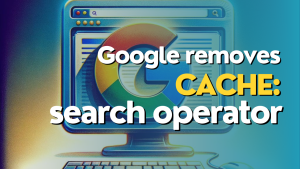I love when calls with prospects or clients generate new ideas.
I had a call with a prospect this week that is in what I would call a not so sexy niche. It’s a line of business that is just tough to generate content ideas that target the end user.
There is a strategy that I have for these situations that has never failed me, so I wasn’t too concerned about that. However, during our conversation, an idea sparked in my head.
Could ChatGPT boost this strategy to even greater heights?
Before we get into that, let me explain the strategy.
Using objections to build content ideas
I’m always looking for new ways to generate content and topic ideas for clients.
This is one of my favorites, but it is one that I don’t think I have ever shared with anyone.
I’ve worked in sales most of my life. I’ve been through sales trainings. I’ve read numerous sales books. One thing that they all will focus on is answering customers’ objections.
Really objections are questions that have not been answered for the customer.
An objection is pretty much anything other than, “Yes, I’ll buy it.”
Some common objections customers will throw out there in pretty much any industry are:
- I can’t afford it.
- It’s too expensive.
- I do not really need it.
- Let me get back to you.
Really objections are questions that have not been answered for the customer.
I can’t afford it is a customer asking you to explain to them how they can afford it. Maybe there is a payment plan. Maybe there is a smaller package that would suit them to get started with. Maybe whatever you are selling actually saves money in the long run and your service or product pays for itself.
It’s too expensive is really them asking for you to explain to them why it costs what it does.
When you hear I do not really need it, they are asking for you to show them all the reasons they do need it.
And Let me get back to you is a customer asking to be told why they should buy today.
There are tons more objections out there but you get the point.
So what does this have to do with creating content or coming up with topic ideas?
This is an exercise I do whenever I start working with a new client. I sit down and brainstorm a list of all the objections a web visitor or searcher might have. I try to think of any reason why someone would not buy their product or service.
Then from there I start brainstorming ideas around content that would answer those objections. The idea behind it is that if someone has an objection to something, they and others are probably looking for solutions to those objections.
This is also a great way to build up topical authority.
This process used to take a solid day or two, sometimes longer, but with ChatGPT, you can turbo charge it.
Let me show you an example of what I mean.
I’m not going to mention the business I talked to earlier this week by name, but I am going to use their line of business because it is not an easy one to come up with topic ideas for. It really highlights how well this works.
We will just call the business ACME, Inc., and their line of business is virtual credit cards for businesses.
We will start by asking ChatGPT to generate some areas around where people might have objections to a service like this.

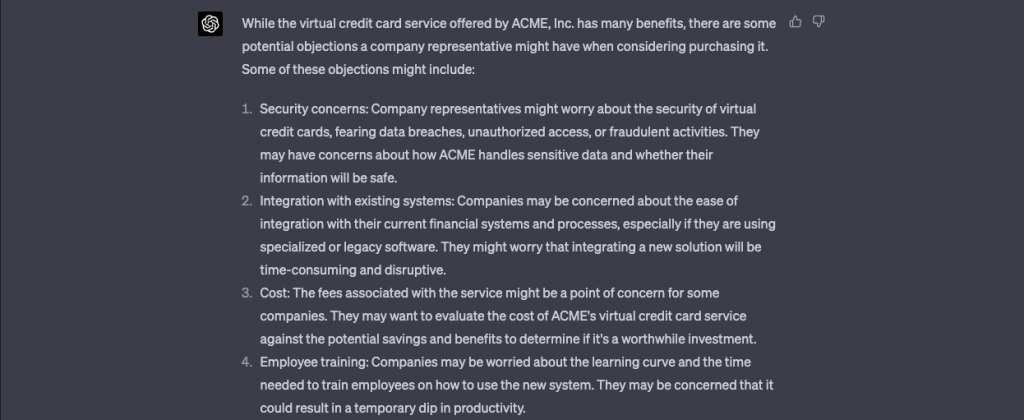
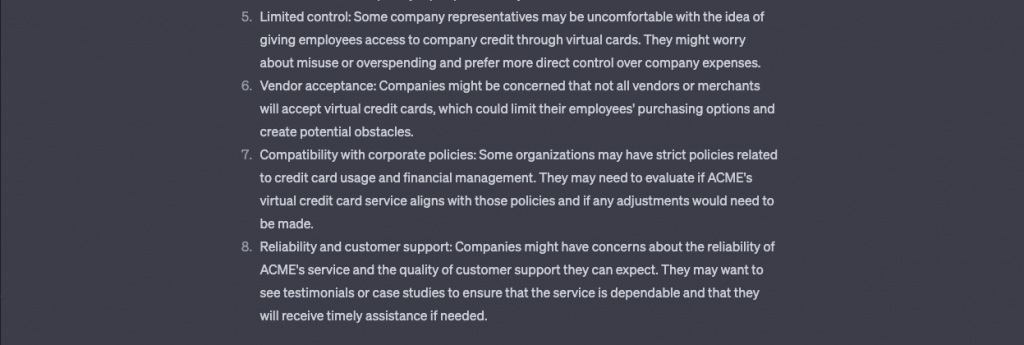
ChatGPT came up with 8. I could ask it to generate more, but as you will see, this is plenty.
Now we are going to narrow down on one of these topics, and it breaks these up into 8 more topics.
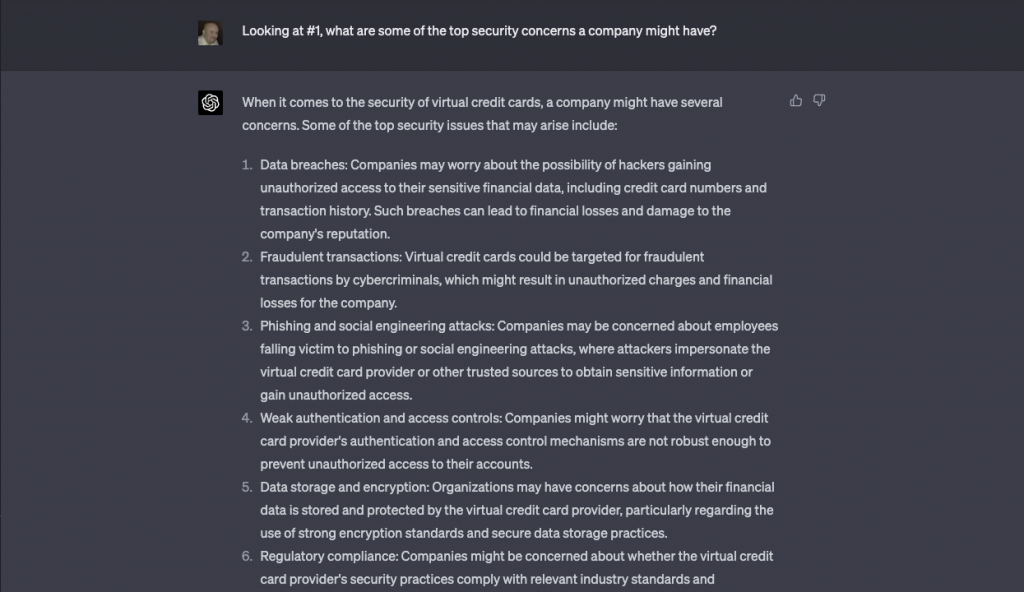
Here is where the fun starts. I’m going to ask ChatGPT to help me build a topical cluster around these potential objections.
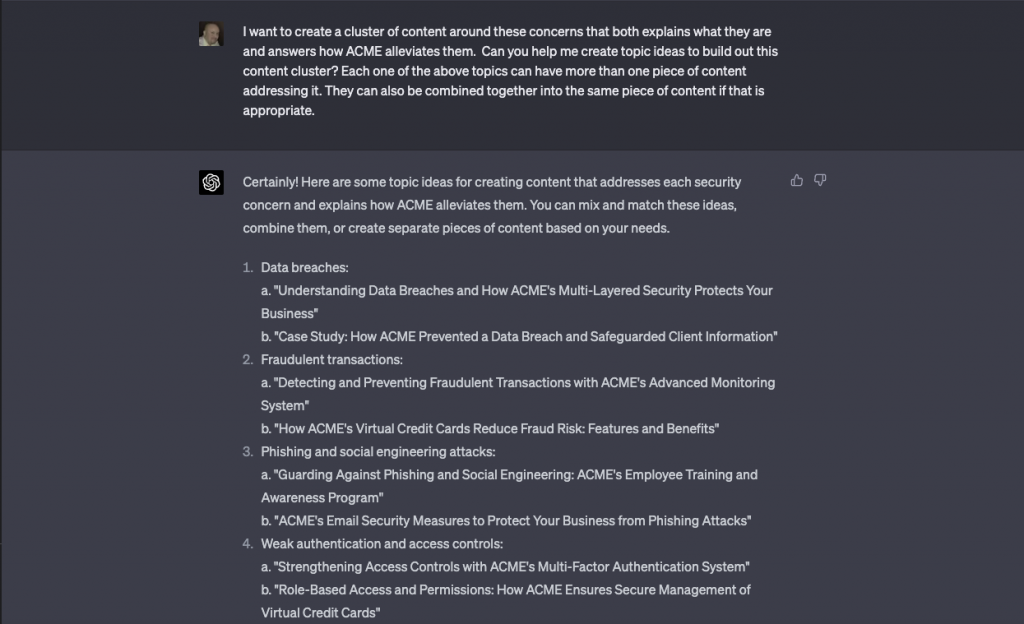
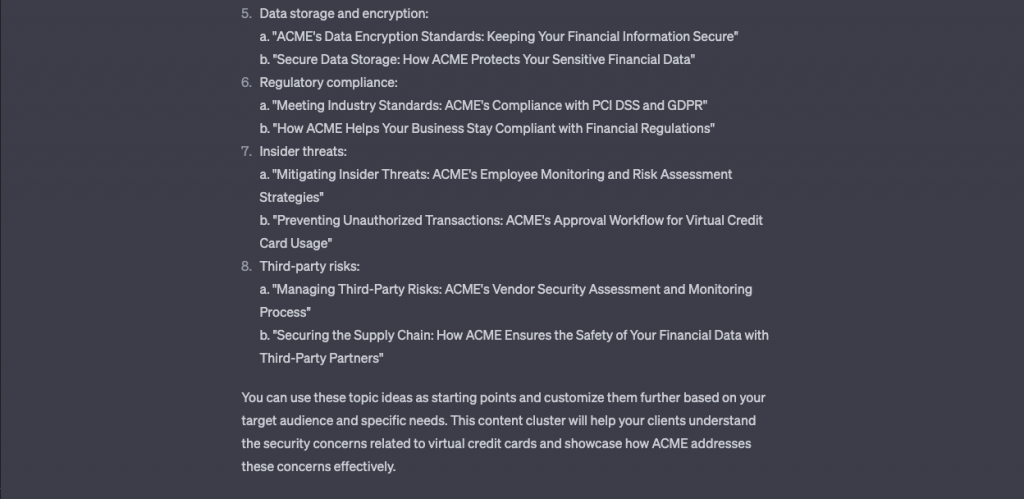
ChatGPT came back with 16 potential content ideas, and that is just for the first objection it listed in the first step, which was security concerns. There are 7 others to do.
Of course I would have to go back and research to make sure there are appropriate keywords to match to these topics. Just taking a quick look at them though and with my familiarity with the industry, I can pretty much guarantee there are.
I have always done this manually by brainstorming ideas myself, conducting searches, scraping PAA questions, looking at content on competitor websites, etc. It would take at least a few hours to go through a topic like this, and I probably still would not have come up 16 content ideas around this one topic cluster.
ChatGPT won’t hit 16 for each of the topics. Some it will hit more. Some it will hit a few less, but even if it averaged 12 for the remaining 7 topic areas, we are looking at another 84 content ideas, giving us 100 total.
And we are not done.
Another thing you can do is ask ChatGPT to look at these from another angle to generate even more potential content ideas.
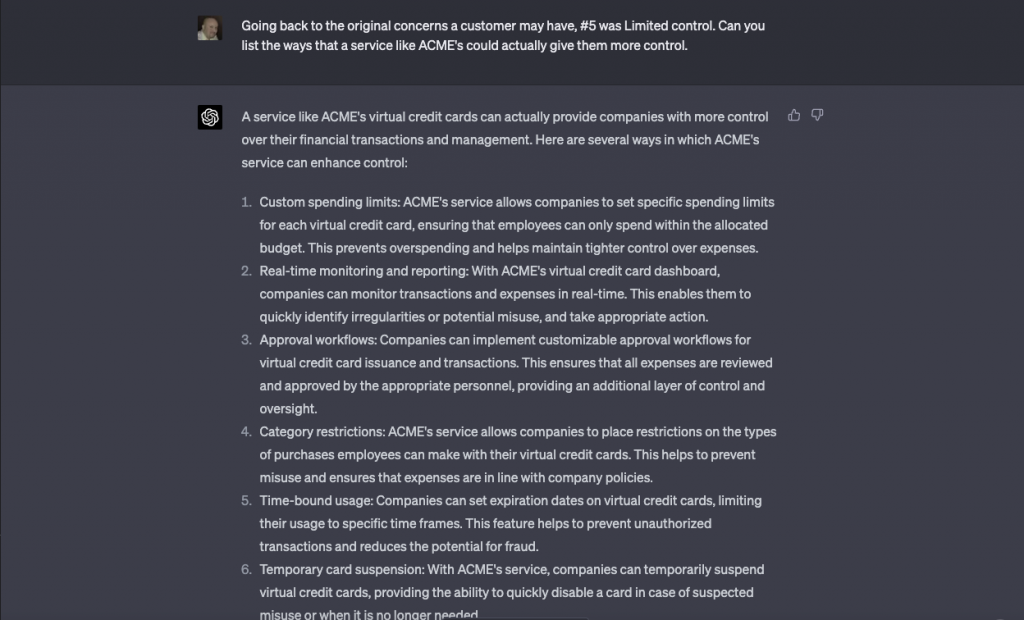
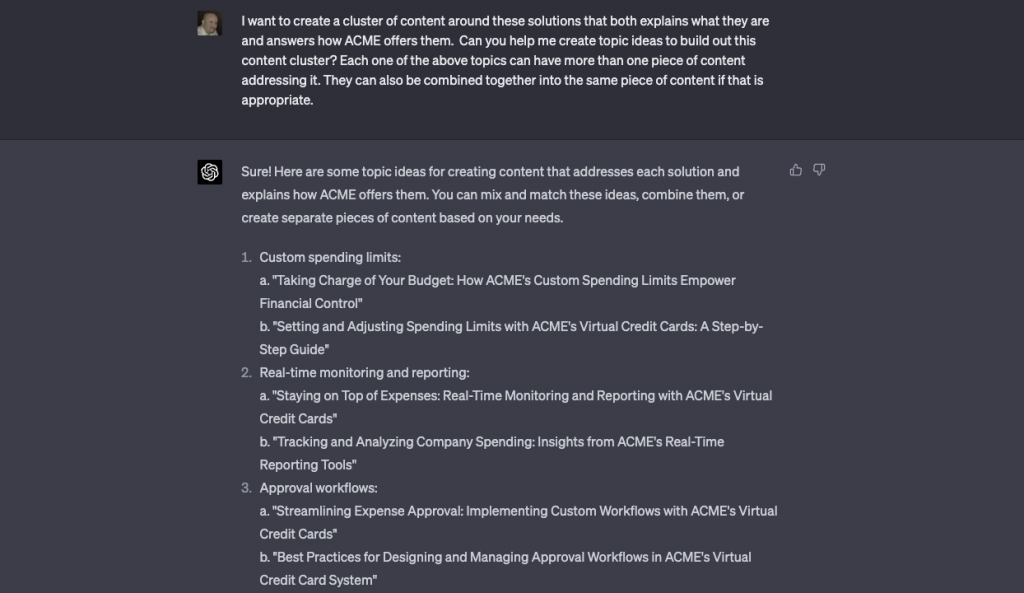
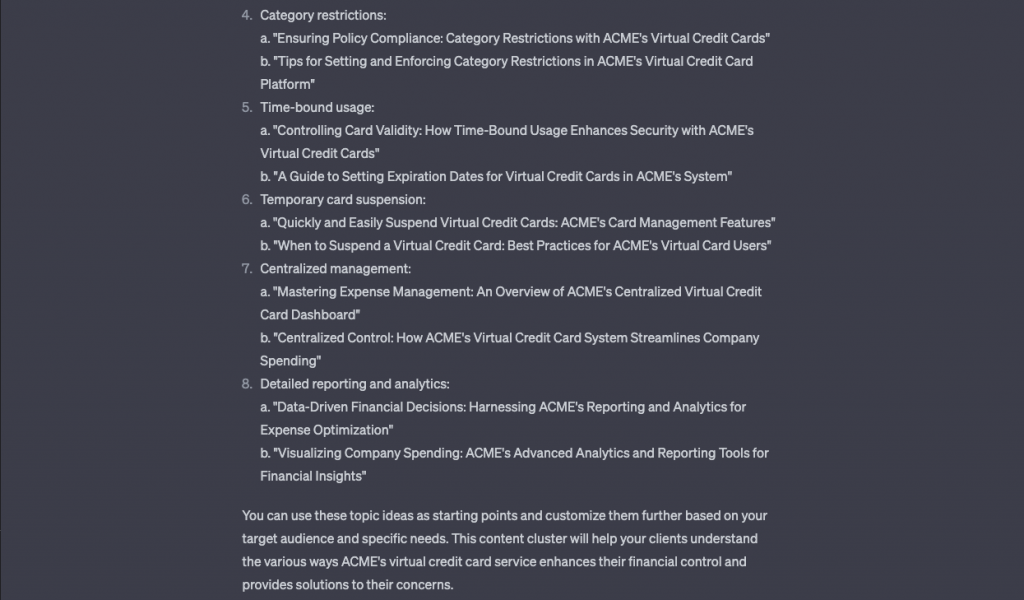
There will be some overlap between the two, but again ChatGPT came up with 16 content ideas.
Just to show you a comparison, I did the same topic asking it for objections like I did in the first example.
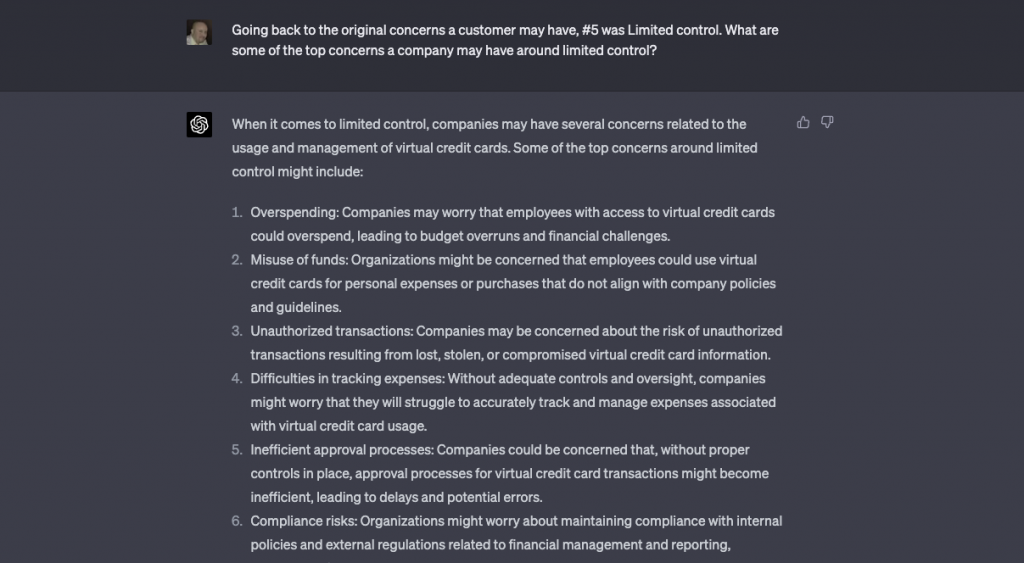
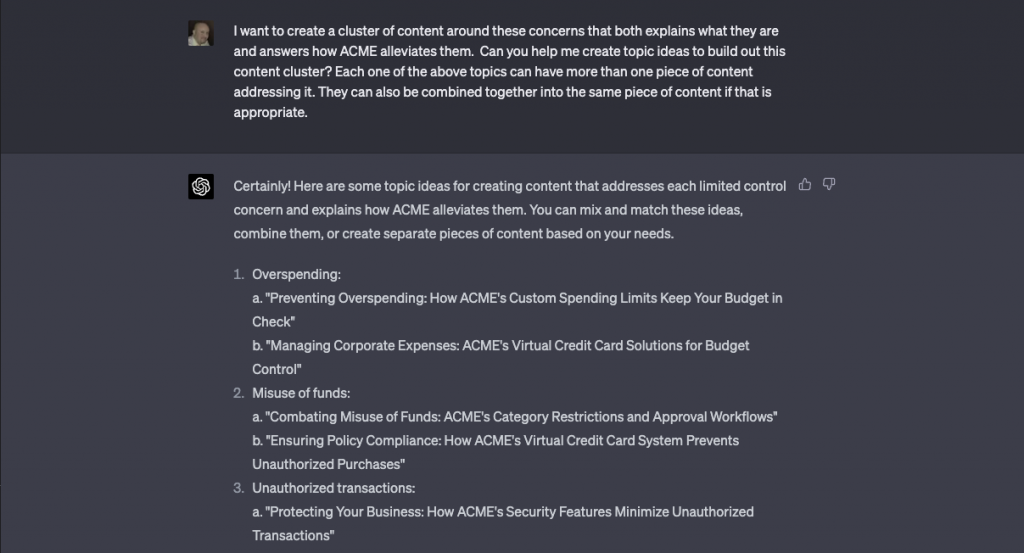
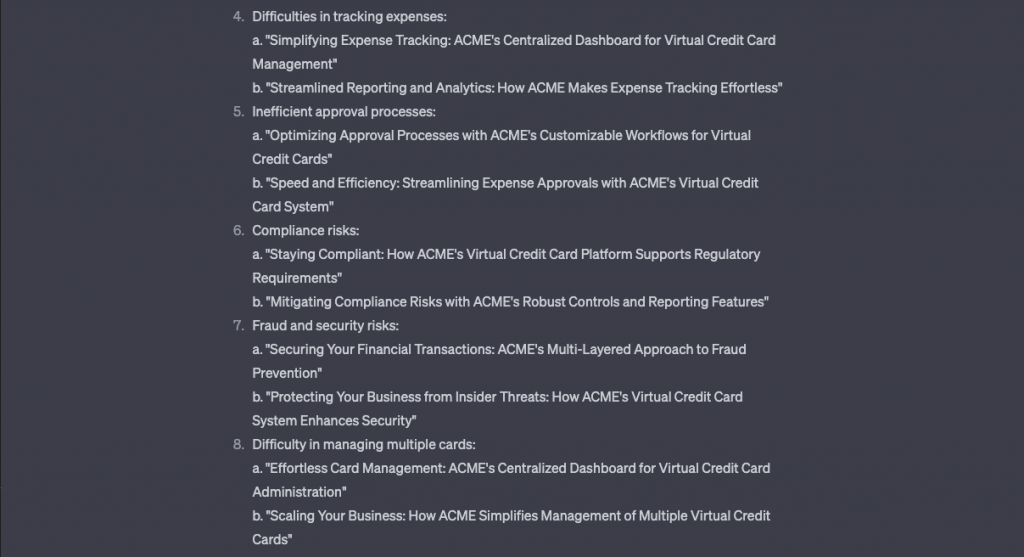
There is some overlap on a few of the ideas, but also some additional ones.
All of this was done with a very generic company description. I did not add any kind of USP’s, unique features, or anything else that makes the company standout from the crowd. You could do that and potentially get more refined content ideas. Maybe even more content ideas.
I also could have asked it to expand and provide additional content ideas on any of the areas that I know there are a lot of topics to cover in.
Or I could have gone back to the beginning and ask it for 5 more potential objections to cover.
I also did this live in a video using the same topic:






